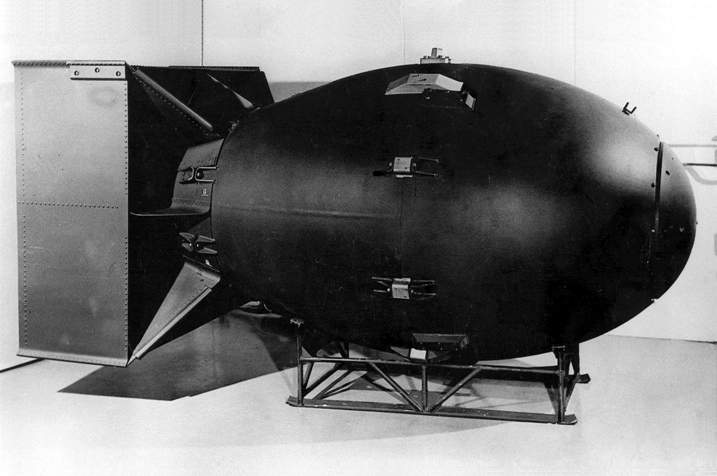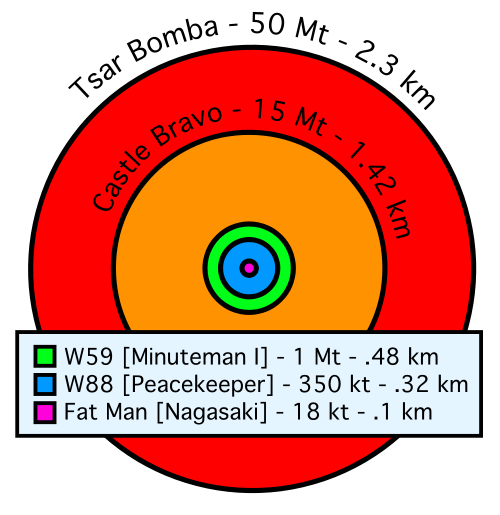As of today, nine countries hold a total of 15000 nuclear weapons according to ICAN (International Campaign to Abolish Nuclear Weapons) which are more than enough to end the civilization and life on Earth as we know it. However, the effects of a nuclear explosion depend on many things i.e. the speed and direction of the wind, weather conditions, terrain. If we want to understand how much area or land a nuclear bomb destroys, we have to know the nature of different kinds of nuclear weapons. There are two types of nuclear weapons based on their internal working process and destructive power.
- A-Bomb (Atom Bomb)
- H-Bomb (Hydrogen Bomb)
A-Bomb (Atom Bomb) is less powerful. Little Boy and Fat Man were A-bombs. This type of nuclear weapon goes through a fission reaction. It splits Uranium-235 or Plutonium-239 atoms to produce a large amount of destructive energy.

H-Bomb (Hydrogen Bomb) is much more powerful than average Atom bombs. Hydrogen bombs are also known as thermonuclear weapons. A hydrogen bomb uses both fission and fusion nuclear reactions. In the beginning, it starts with a fission process like a normal A-bomb but the initial energy from the fission reaction then ignites a fusion reaction in a secondary core of the bomb. The secondary core is made of hydrogen isotopes like Tritium or Deuterium. Immense temperature and pressure from the initial fission reaction fuse the nuclei of hydrogen atoms and result in a much larger explosion.
The Soviet Union built the largest thermonuclear bomb in human history. The name of the bomb was Tsar Bomba.
- It had a yield of 50 megatons of TNT.
- Fireball radius was 2.3 km or covering 16.61 square kilometers.
- Radiation radius: 7.49 km or covering 176 Square km,
- Airblast radius: 12.51 km or covering 491square km,
- Thermal radiation radius: 77.06 km or covering 18626 square km. It was about 3,333 times more powerful than the Little Boy.
- The intense heat from the detonation was capable of causing third-degree burns at a distance of 62 miles from ground zero.
- The shock wave was felt by the people as far away as 692 km, and window glasses were shattered at a distance of 900 km from ground zero.
- Though the bomb was exploded 13,000 feet above the ground, its Richter Magnitude was registered at 5–5.25. The seismic waves traveled three times around the world.
- Tsar Bomba was ten times more powerful than the explosive power of all the conventional weapons used in the Second World War.
Comparative fireball radii for a selection of nuclear weapons

Generally, a bomb is calculated to burst at a certain height above the ground so that its destructive energy can travel as far as possible. To put it another way, a warhead must be detonated at a height that can facilitate the bomb to destroy buildings and man-made infrastructure but not the ground below, since it would be a total waste of energy.
The views and opinions expressed in this article are those of the author.
This work is licensed under a Creative Commons Attribution-NonCommercial-NoDerivatives 4.0 International License.

Md. Aslam Hossain is a part-time senior editor of The Geopolitics. He is also an entrepreneur. He has earned his Bachelor of Arts and Master of Arts in International Relations. His focus is on geopolitics and security.

